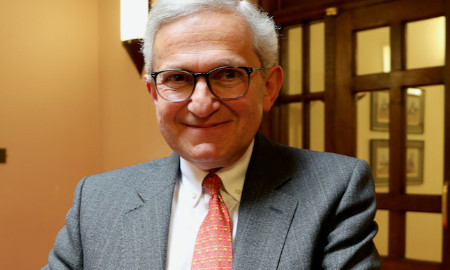Sign up for our free daily newsletter
YOUR PRIVACY - PLEASE READ CAREFULLY DATA PROTECTION STATEMENT
Below we explain how we will communicate with you. We set out how we use your data in our Privacy Policy.
Global City Media, and its associated brands will use the lawful basis of legitimate interests to use
the
contact details you have supplied to contact you regarding our publications, events, training,
reader
research, and other relevant information. We will always give you the option to opt out of our
marketing.
By clicking submit, you confirm that you understand and accept the Terms & Conditions and Privacy Policy
All UK museums should follow the British Museum’s lead in making complete digital catalogues of their art and artefacts available online to not only improve accessibility and security, but to also aid in identifying and returning stolen pieces to their rightful owners.
An independent review instigated by the British Museum’s board of trustees recently recommended that the museum completes the full documentation and digitisation of all items in its collection, after the theft of around 2,000 items in recent years. The recommendations have been unanimously accepted and the museum has committed to begin work on delivery immediately.
That work should be replicated by other museums in respect of their own collections. Many major museums still lack comprehensive online catalogues of their collections, making it extremely difficult for people to track artefacts that were stolen from their families or communities, or for other countries to identify looted objects, including from archaeological sites.
The process of fully digitising a collection catalogue the size of the British Museum’s is a massive undertaking – not least because objects may need to be photographed or documented for the first time and all information including dimensions, origin and provenance will need to be verified. But if records remain incomplete and unavailable to the public, collections will remain vulnerable to theft – with museums unlikely to even know if an object has been stolen – and, in turn, the public’s access to cultural heritage and the ability to pursue repatriation claims will be stifled. The vast majority of works in collections are not displayed publicly, and many are not even registered in a museum’s own internal catalogue.
Whilst the undertaking is vast, public museums should work collaboratively in the digitisation of their collections, ideally based on an agreed sector-wide approach. Sharing access to resources and knowledge about the digitisation process and lessons learnt is likely to reduce overall costs and is also likely to make the process more efficient, more consistent across institutions and ultimately lead to a better experience for users.
Digitisation might help in recovering stolen artefacts
Restitution – the process by which (often stolen) cultural objects are returned to an individual or a community – is an issue that has gained unprecedented momentum in recent years.
However, a major problem in the restitution process for stolen artefacts is simply not knowing where objects are held. More publicly funded museums should play their part in increasing the transparency of their collections.
Even now, many museums have yet to fully compile their catalogues, and crucially, fewer have made them available to the public. That makes tracking down stolen works impossible in some cases.
Digitising a museum’s catalogue and making it publicly available will facilitate greater transparency of objects within the collection and their ownership history or ‘provenance’. As more museums follow the British Museum’s lead, it may be possible to draw links between collections and identify groups of potentially stolen items with similar provenance, in turn providing sufficient information to pursue a restitution claim.
Although prompted by the recent scandal, the British Museum is now setting a leading example in taking on the task of digitising and publishing an eight million-item collection. That should act as a spur for many other museums to do the same.
Digitisation might help right Nazi looting
Laws like the Holocaust (Return of Cultural Objects) Act 2009 and the UK Spoliation Advisory Panel were designed to assist museums in the UK in returning objects that were looted or subjected to forced sale between 1933 and 1945. However, according to the US National Archives and Records Administration, at least 100,000 works of art are still missing from the Nazi occupation.
The British legal system has mechanisms available for returning looted items to their rightful owners, particularly if the items sit within a public collection. However, that’s often meaningless if the item is sitting in storage, unknown and uncatalogued. That’s the case for a huge number of items.
The digitisation of collections could aid the return of objects which are the subject of legislation aimed at repatriating objects looted or subjected to forced sale under the Nazi regime, such as the Holocaust (return of Cultural Objects) Act 2009.
The bigger picture
Digitising an object may allow for an even more in-depth analysis of the piece than what was previously possible without digitisation. Museums should not just view digitisation as an administrative step to preserve and record collections, but should embrace the process and recognise the opportunities it can offer to enhance their institution.
Improving public access to the UK’s collections encourages engagement with important cultural artefacts and the debate around repatriation of such pieces. At the heart of every museum and cultural institution is the purpose to share knowledge of the past in the hope of generating new expressions of thought. Digitising records and making them public is a huge advancement in that purpose and should be embraced by all UK institutions.
Oliver Tapper is a senior associate and commercial litigator at Pinsent Masons, with a particular focus on the art and cultural property sector.
Email your news and story ideas to: [email protected]











